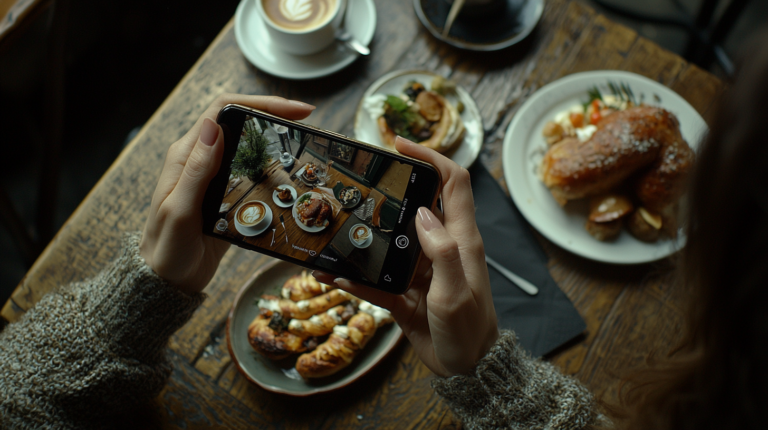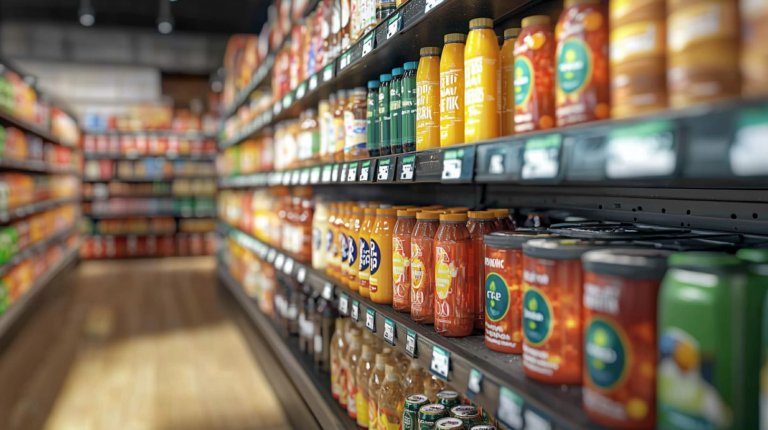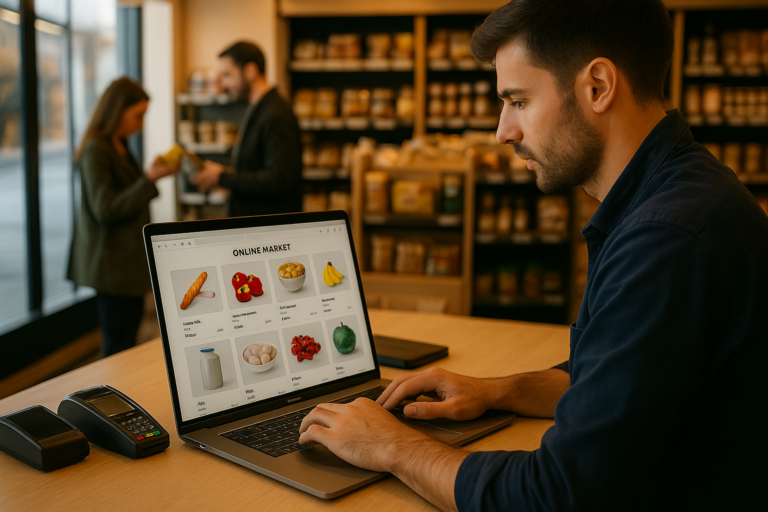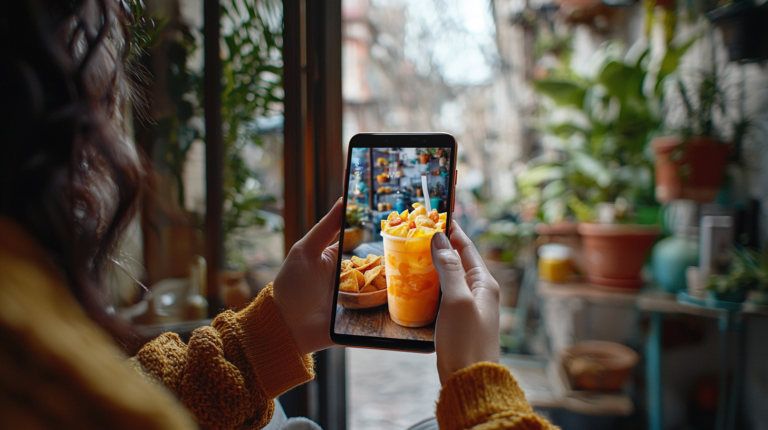Omnichannel loyalty: The ultimate guide for retailers

The media landscape is at the peak of fragmentation.
On average, users spread their online activities between some 6.6 different social media platforms, each offering its own customer experience and rewards.1 If a retail business wants to grow, expanding into multiple online channels isn’t a luxury—it’s essential to keep up with customer appetites for entertaining content and real, tangible rewards.
Omnichannel loyalty programs were created for precisely this reason. So what does omnichannel mean? This term simply refers to the integration of multiple channels to create a more seamless customer experience. Through an omnichannel retail strategy, retailers can take the traditional customer loyalty program into the digital arena and expand it by harnessing the (staggering) versatility of digital channels. The objective? To increase brand awareness, drive customer retention and foster more dimensional, fulfilling relationships with users.
Below, we break down how retailers should be building out their omnichannel loyalty strategy to fuse digital and IRL marketing practices, and create a unique program users will engage with.
5 priorities when building an omnichannel loyalty program
The ultimate goal of loyalty programs is to conjure the “world” of a brand and plot out a customer journey through it. This journey compels customers to continue by presenting them with benefits and rewards for their engagement.
While the ultimate goal of loyalty programs is the same, individual retailers’ approaches will differ considerably when it comes to structure, what they offer and the platforms they exist on.
However, brands can position themselves for a successful launch—and create a compelling customer experience—by prioritizing 5 main pillars of their omnichannel loyalty strategy.
#1 Identify the user and their natural (online) habitat
Before charging ahead with an omnichannel loyalty program, it’s critical for retail businesses to develop a portrait of who their target customer is. Mapping user personas is important for several reasons:
- It will help identify the types of reward structures that would best motivate customer engagement.
- It will help decide what types of content users most want to see.
- It will enable them to map out which channels the loyalty program will encompass (according to the online spaces their target audience frequents).
Identifying the most viable channels for reaching a target customer is also an essential element of building brand awareness. Yes, every business, no matter the industry, wants to generate revenue. But in today’s market, expanding visibility as a brand is just as important as focusing on sales—in fact, it’s one of the best ways brands can cement conversions in the long run.2
#2 Consider creating an app
One report from Google divulged that as many as 75% of users are more likely to make a purchase when their customer experience is frictionless.3 The most frictionless buying experience non-pareil involves investing in creating a branded app.ysup>3
Having a branded app as a retailer gives a company and its associated loyalty program several advantages:
- It creates a more seamless UX – Branded apps’ primary function is to be an online home base where users can easily explore a brand’s world and make purchases. As loyal customers, they’ll also easily see their purchase history, the points they have in the bank and the rewards they’ll be eligible for if they stay engaged.
- It gives users opportunities to personalize – Google itself reports that nearly ¾ of consumers are more inclined to have brand loyalty if they know they’ll enjoy a customized shopping experience and benefit from their patronage.4 With an app, members can create profiles and self-report what they most want from a brand.
- It gives users opportunities to connect – Some retailers use their apps as a place to house their online community of customers. There, users can share valuable feedback or reviews about products to connect with other members.
- It extends and consolidates brand identity – While web browsers and stores create a longer (and, often, meandering) pathway down the funnel, apps sequester all customer actions in one place. They also help define and consolidate a brand visually all while fully integrating with a customer’s device.
Finally, branded apps give retailers maximum control over the content visitors see.
And when the overall goal of omnichannel loyalty programs is to create a cohesive, global user experience, that makes branded apps the linchpin of that experience.
#3 Use digital tools to enhance in-store experience
Whether or not a brand has ventured out into multiple digital channels, the truth is that business today is inherently hybrid. For instance, one study from Insider Intelligence showed that half of the retail purchases made in a physical store are “digitally influenced”—meaning, users conducted online research on the product of interest before ultimately deciding to buy.5
Populating multiple marketing channels is one of the primary ways retailers can gain some control over these purchasing decisions. An excellent strategy for doing so is to use digital tools to complement in-store purchasing experiences and make loyalty program membership even easier and more valuable.
Some common techniques for doing so include:6
- Using QR codes – These make reward points easily swipeable in-store—no names, emails or other Web 2.0 details required.
- Implementing contactless payment – Digital wallets like ApplePay and PayPal remove one critical step in customers’ pathway renowned for causing wet feet syndrome.
#4 Ramp up engagement-driving initiatives
Many retailers resist omnichannel marketing or loyalty programs because they worry it will have the effect of “spreading out” customers’ purchase pathways, leaving a wider margin for purchases to be abandoned.
But an early 2017 study from Harvard Business School on omnichannel retailing showed that 73% of retail shoppers already eddied between more than one channel over the course of their purchase experience.7 Rather than resisting the trend, brands can view it as a retail marketing opportunity to provide loyal customers value at every corner by reimagining what qualifies as a “benefit” in the first place.
Let’s take an example: The North Face. This company’s loyalty program structure garners customers 1 point for every $1 they spend. But they can also earn points by:8
- Visiting national parks and recreation centers.
- Bringing a tote from home (rather than using a discardable shopping bag in-store).
- Referring fellow outdoorsy friends to the loyalty program.
By expanding avenues for members to rack up points, the retailer not only created more opportunities for members to benefit—they also strengthened their brand identity by aligning those opportunities with core company values.
#5 Create “gamification” opportunities to retain and attract new customers
To an extent, shopping in a physical store has been a “gamified” experience for years. Remember back in 2005, when you’d patiently wait for your turn in line to approach the Sephora or Starbucks register associate and ask how many points you’ve racked up? (And, most importantly, whether they’d earn you a free skincare sample or a Caramel Frappé).
As it turns out, that game-like adrenaline rush is as real for users shopping on their devices as it was back in the days when more of us frequented brick-and-mortar businesses—yes, even if those rewards are digital.9
Not only do omnichannel loyalty programs capitalize on that chemical gratification, but they also give users what they’re asking for: According to one survey, 80% of millennials expressed a desire to earn rewards not solely through points-earning purchases but from engaging with brands online in game-like ways.
For retailers developing their omnichannel loyalty program, this might look like:9
- Entering data volunteered by leads, like email addresses, to enter new sign-ups into sweepstakes.
- Creating serialized, story-driven content that keeps subscribers on the edges of their seats.
- Encouraging viewers to participate in content marketing campaigns by tagging friends, hashtagging user-generated content and getting rewarded for mentioning retailers by name online.
There are a host of ways to get creative and tap into people’s competitive spirits and rewards-driven behavior. Above all, successful omnichannel loyalty programs are driven by one ethos: that today’s consumers aren’t motivated by sheerly transactional relationships with companies.
They want to enjoy a fun purchasing experience that’s seamlessly interwoven into the rich, entertaining and, yes, rewarding experiences they’re already having online.
Build the bones of your omnichannel loyalty program with Power Digital
Creating a thriving omnichannel loyalty program across browsers, apps and in-store can harness the trend for both brands’ and consumers’ mutual benefit, meeting customers everywhere they are.
The only challenge? Outperforming your competitors when you’re juggling content strategies across multiple channels is a tall order, particularly if you’re operating in the retail sector.
At Power Digital, we have a robust track record for helping guide established and up-and-coming retail businesses hit their stride in a hybrid landscape. From our in-house analytics platform nova to the content strategy that will build the world you and your customers share, we’ll use our expertise to create an engrossing experience bespoke to your brand and mission.
Interested? Reach out for a consultation to learn how you can grow your business with us today.
Sources:
- The University of Maine. Social Media Statistics Details. https://umaine.edu/undiscoveredmaine/small-business/resources/marketing-for-small-business/social-media-tools/social-media-statistics-details/
- Forbes. To Convert More Customers, Focus On Brand Awareness. https://www.forbes.com/sites/forbesagencycouncil/2019/10/22/to-convert-more-customers-focus-on-brand-awareness/?sh=74c686022075
- Think with Google. 4 ways to make your app successful. https://www.thinkwithgoogle.com/marketing-strategies/app-and-mobile/how-to-make-successful-app/
- Insider Intelligence. In-Store Sales Still Rule, but Digital Helps. https://www.insiderintelligence.com/content/in-store-sales-still-rule-but-digital-helps
- Retail Wire. Is mobile enhancing the in-store shopping experience? https://retailwire.com/discussion/is-mobile-enhancing-the-in-store-shopping-experience/
- Harvard Business Review. A Study of 46,000 Shoppers Shows That Omnichannel Retailing Works. https://hbr.org/2017/01/a-study-of-46000-shoppers-shows-that-omnichannel-retailing-works
- Fabric Blog. What Are Examples of Omnichannel Loyalty Programs? https://fabric.inc/blog/omnichannel-loyalty-programs/
- Cleveland Clinic. Why Retail “Therapy” Makes You Feel Happier. https://health.clevelandclinic.org/retail-therapy-shopping-compulsion/
- Forbes. Is It Time To Add Gamification To Your Loyalty Strategy? https://www.forbes.com/sites/forbesagencycouncil/2019/01/22/is-it-time-to-add-gamification-to-your-loyalty-strategy/?sh=7c2ac8ef52b3
Our Editorial Standards
Reviewed for Accuracy
Every piece is fact-checked for precision.
Up-to-Date Research
We reflect the latest trends and insights.
Credible References
Backed by trusted industry sources.
Actionable & Insight-Driven
Strategic takeaways for real results.


















